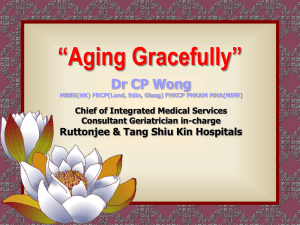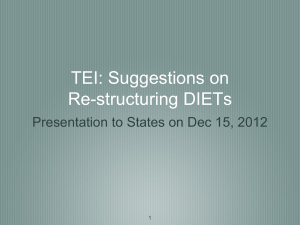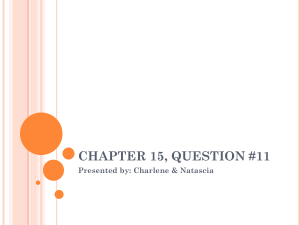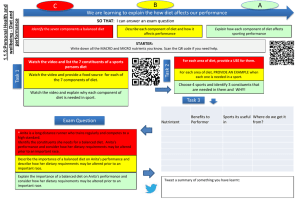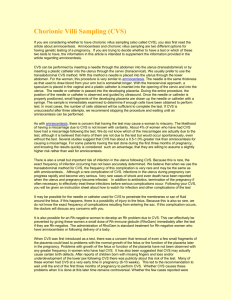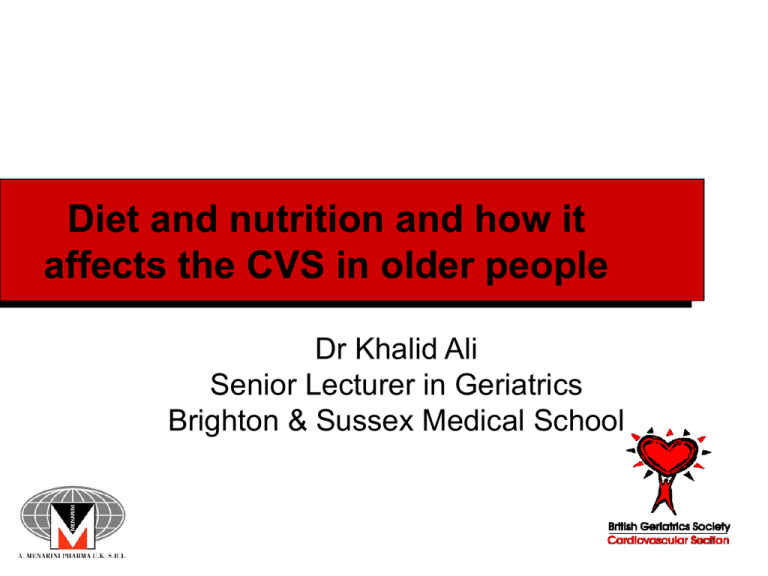
Diet and nutrition and how it
affects the CVS in older people
Dr Khalid Ali
Senior Lecturer in Geriatrics
Brighton & Sussex Medical School
Ageing, diet and health
From Scurvy to Gout,
the story goes on
Older people and diet
Elizabeth Taylor
Elvis Presley
To Ghandi
To Hannibal Lecter
Contents of the talk
Malnutrition
Under nutrition
Obesity and the Metabolic syndrome
Assessment of nutritional status
Relation to CVS health
Intervention trials
Mediterranean diet
Current evidence
Introduction
Increased longevity worldwide
EU 2 years rise in life expectancy
Heterogeneity
Research bias
Food, health and age
“when you don’t have any money, the
problem is food. When you have money, it
is sex, when you have both, it is health”
(The Ginger Man, 1955, J. P. Donleavy, Irish
American novelist).
Ageing and nutrition
Factors affecting food intake in the elderly:
• Physical disabilities
Chewing problems
Dysphagia
Problems cutting food
Impaired mobility
• Mental impairment
Loss of memory
Confusion
Dementia
• Psychological factors
Depression
• Social
Loneliness
• Economic
Poverty
• Health problems
Gastro-intestinal diseases
• Chronic conditions
Pain
• Iatrogenic
Medications
Impact on disease
Every organ system is affected
CVS, CNS, Endocrine (cholecystokinin, leptin,
cytokines, reduced testosterone)
Bone health and Osteoporosis
Acute illness
Dehydration
PEM and relation to outcome in H. patients
(Morley 1998)
Ageing
Reduced physical activity
Reduced muscle mass
Reduced muscle strength
Poor performance
Poor QOL
Poor mood
Anorexia of ageing
Decline in resting BMR
Less physical activity
Decline in smell and taste
Deterioration in dental status
Decrease in opioid feeding drive
Increase in early satiety
Slowing of gastric emptying
BODY COMPOSITION IN THE ELDERLY
LEAN BODY MASS
H
80
Kg
H
60
40
BODY FAT
BODY FAT
H 2O
H 2O
20
LEAN BODY MASS
0
BONE MINERAL
25
LEAN BODY MASS
BONE MINERAL
70
AGE (years)
Is weight loss and body composition change an aging process?
Young vs deconditioned vs leisure exercise vs high usual daily activity
40 year-old
70 year-old sarcopenic
66 year-old runner
76 year-old farmer
Age-related decreases in thigh muscle area, knee
extensor strenght, and aerobic capacity in 78
healthy persons
Nair KS, Am J Clin Nutr 2005
Age-Related Changes in Physiologyc Functions
That Influence Nutrient Needs
Peripheral tissues take up fat-soluble vitamins at slower rates
Efficency absorption of calcium declines
Skin synthesis of vitamin D declines
Utilization of Vitamin B 6 is less efficient
One third of individuals older than 70 y lose entirely or have
significant diminished capacity to secrete stomach acid
(Vit B12, calcium, iron, foilc acid, zinc)
Rosemberg IH, 1996
Age-Related Changes in Physiologyc Functions
That Influence Nutrient Needs
Peripheral tissues take up fat-soluble vitamins at slower rates
Efficency absorption of calcium declines
Skin synthesis of vitamin D declines
Utilization of Vitamin B 6 is less efficient
One third of individuals older than 70 y lose entirely or have
significant diminished capacity to secrete stomac acid
(Vit B12, calcium, iron, foilc acid, zinc)
Rosemberg IH, 1996 (modificata)
Nair KS, 2005
Ageing and mortality
“Young men may die,
but old men must die”
Malnutrition??
Excess intake
Unbalanced diet
Undernourishment
Specific dietary deficiencies
Malnutrition and older people
Global phenomenon
European scale
Early diagnosis is crucial
Prevalence is 15% in community
5-44% in homebound ind.
20-65% in hosp. pts.
23-85% in nursing home res.
But it can be reversible
Evaluation
History, examination
Blood tests: albumin, Cholesterol, TLC
BMI does not work in older people
Screening tools: INA
SGA
DETERMINE
SCALES
MNA
Sarcopenia
Definition
“Sarcopenia is a term that denotes the
decline in muscle mass and strength that
occurs with healthy aging.”
Rosenberg, Am J Clin Nutr 1989
“Sarcopenia is part of normal aging
and does not require a disease to occur,
although it is accellerated by chronic diseases.”
Roubenoff et al, J Gerontol 2000
The metabolic syndrome (1)
A bit of history
Albert Camus
The metabolic syndrome (2)
Growing now to epidemic proportions
In UK the 65-75 year old,25% women and
18% of men are obese
>75 years, 22% women, and 12% men
The metabolic syndrome (3)
IDF Definition
Components:
fasting blood glucose: >5.6 mmole/L
Hypertension
High Triglycerides> 1.7 mmole/L
HDL Chol.<1.03 mmole/L
Good old age starts early
Absence of CVS risk factors at 50 predicts
less disease and longer life.
Framingham Heart Study participants at 50
Less CVS risk >39 vs 28 in men
>39 vs 31 in women
Lloyd-Jones D et al 2006, Circulation.
Risk factors for coronary artery disease and stroke
Hypothetical representation of relative importance of risk factors
VASCULAR
DISEASE
CAD
STROKE
Hypertension
Hypercholesterolemia
Delanty N et al. Stroke. 1997; 28: 2315-2320
?
Cytokines
IL-1 IL-6 IL-8 TNF-
IFN- GDF-8 CNTF
Muscle
catabolism
Inhibition
of protein
synthesis
and muscle
repair
Apoptosis
Skeletal
muscle
contractility
CVS and death in older people
553 men, 888 women
Above 60 years
Mortality at 5 and 5-9 years
Inflammatory markers & prediction of death
Biomarkers (CRP, AAG, low albumin and
TTR)
These markers predict death
Major studies
SENECA
Our BRAVES study
Mediterranean diet
• Benefits
• On CVS disease
Medi. D also good for your brain
M diet can reduce the risk of MCI and
progression to Alzheimer’s disease
Endothelial dysfunction and diet
Adherence to the Mediterranean diet
attenuates inflammation and coagulation
The ATTICA Study (1,514 men, 1528
women)
(Chrysohoou C et al 2004. J Am Coll
Cardiol. 2004; 44:152-8)
The HALE Study
• Single and combined effect of Mediterranean diet, being
• physically active, moderate alcohol use and non-smoking on
allcause
• mortality (10-year follow-up of 2,339 participants of the
• HALE study, aged 70 to 90 years at baseline; Knoops et al. 2004)
• Hazard ratios (95% CI)
• ·Mediterranean diet 0.77 (0.68 – 0.88)
• ·Moderate alcohol use 0.78 (0.67 – 0.91)
• ·Non-smoking 0.65 (0.57 – 0.75)
• ·Physical activity 0.63 (0.55 – 0.72)
• ·All four factors 0.35 (0.28 – 0.88)
EPIC Study
M. diet confer a health benefit and prolong
life
(Trichopoulou et al BMJ 2005)
Cereals and CVS
Cereal fibre consumption results in less CVS
events in old people
Mozaffarian et al 2003
Olive oil and the elderly
Olive oil and health in Italy
Fortes C 2000 et al
The CARDIA Study
The CARDIA study
3031 young adults
The cardia study:
3031 young adults, 15-year prospective analysis
Pereira et al, 2005
“healthier lifestyle”
Body
weight
Physical
exercise
Health diet
Lifestyle changes work
Systematic review of 105 trials on BP
6805 subjects
Improved diet, aerobic exercise, alcohol and
sodium restriction, fish oil supp.
Reductions in BP were: 5.0, 4.6, 3.8, 2.3
(also in DBP) mmHg
Dickinson H O et al 2006, J Hum Hyp
Does supplementation work?
Cochrane meta-analysis 2006
55 trials, 9187 subjects
Poor quality data
Supplements can improve n. status
But not robust enough to support routine
supplementation
A more recent view
Protein and energy supplementation in
elderly people at risk from malnutrition
Cochrane Database Syst Rev 2009
Supplementation results in a small
consistent weight gain, mortality may be
reduced in undernourished p, but no effect
on functional ADL or LOS.
How much exercise
regular moderate-intensity physical exercise
at least 30 min continuous or intermittent (preferable 60 min)
5 d/w (but preferable daily)
AHA/NHLBI Scientific Statement. Circulation, 2005
“30 min of low activity undertaken 5 or more times per week
is important to reduce
morbidity and mortality associated with
cardiovasculardiseases”
International Obesity Task Force, 2002






